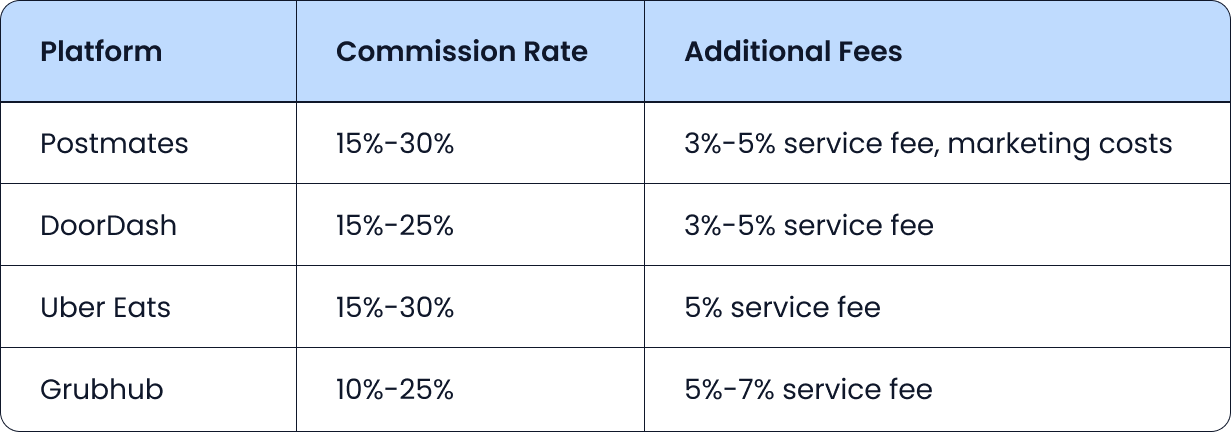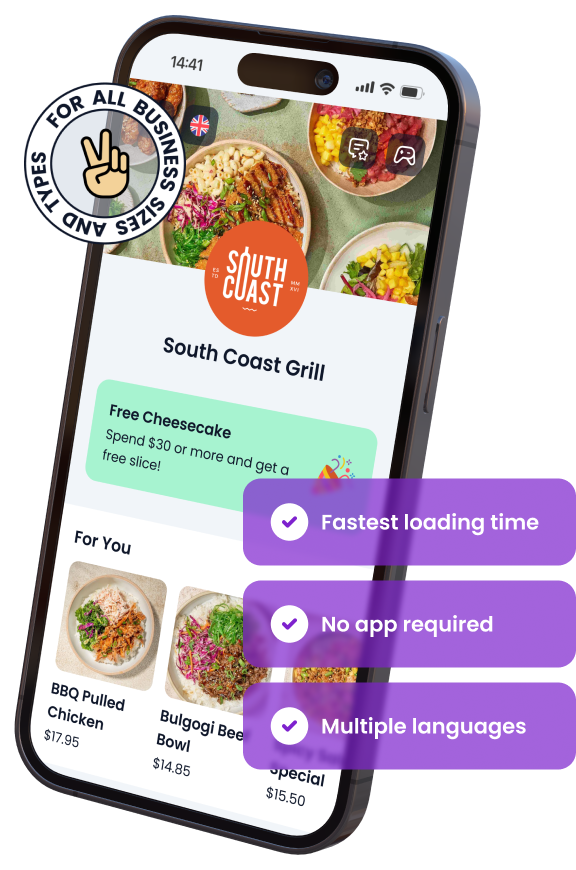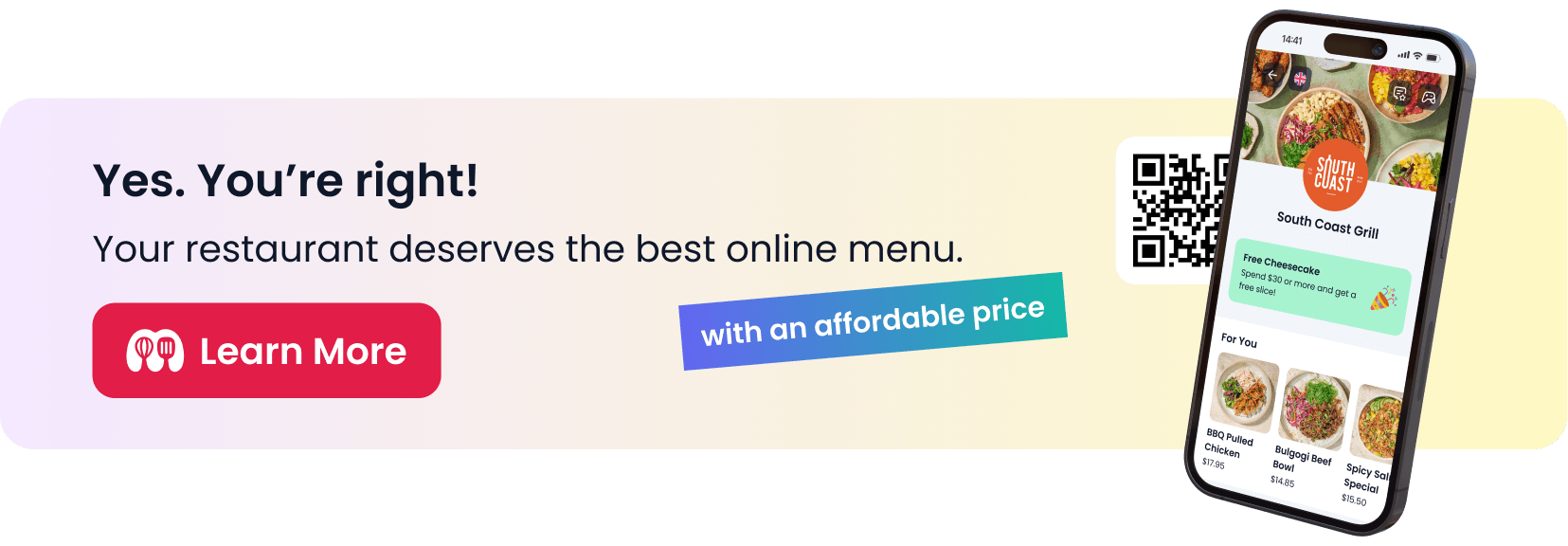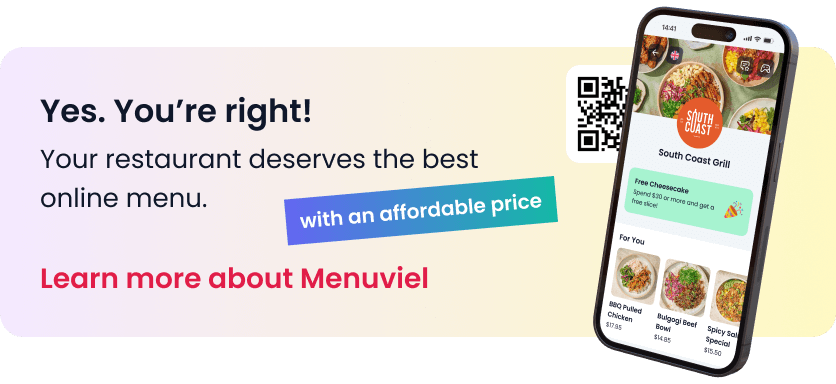Postmates Fees and Commissions for Restaurants: Detailed 2025 Guide
As the food delivery industry continues to grow, platforms like Postmates are playing a vital role in connecting restaurants with customers who prefer convenient online ordering. While the increased reach is a clear benefit, understanding the costs associated with these platforms is essential for restaurant owners to maintain profitability.
Postmates charges a variety of fees, from commissions on every order to optional marketing fees, all of which can significantly impact your bottom line. Navigating these charges can be challenging, especially for small and medium-sized restaurants that rely heavily on delivery platforms for additional revenue.
This guide provides a detailed breakdown of Postmates fees and commissions in 2025. Whether you’re considering joining the platform or looking to optimize your costs, this article will equip you with the insights and strategies needed to make informed decisions and maximize your profit margins.
What Are Postmates Fees and How Do They Work?
When partnering with Postmates, understanding the various fees and their purpose is crucial for managing your restaurant’s profitability. These fees encompass everything from delivery services to marketing efforts, enabling Postmates to maintain its platform while providing value to restaurant owners and customers alike. Here’s a closer look at the types of fees and their mechanics.
Definition of Postmates Fees and Commissions
Postmates fees and commissions are charges applied to restaurants for using the platform to process orders, deliver meals, and market their services. These fees are typically a percentage of the order value or flat rates, depending on the service offered.
Key aspects of Postmates fees include:
- Commission fees on every completed order.
- Additional fees for marketing or promotional boosts.
- Costs for optional subscription services like Postmates Unlimited.
Understanding these charges is essential to calculate your true cost of doing business with Postmates effectively.
Types of Fees Charged by Postmates
Postmates applies several types of fees, each tailored to a specific service provided through its platform. Below are the main fee categories:
- Delivery Fees:
These are paid by customers and vary based on factors such as distance and order size. While customers bear the cost, it indirectly affects your order volume. - Service Fees:
Restaurants are charged a percentage of the total order value as a service fee. This fee covers the operational expenses of maintaining the platform. - Marketing Fees:
Optional costs incurred when restaurants opt for promotional campaigns to enhance visibility on the platform.
These fees work collectively to provide Postmates’ services, but they can significantly impact a restaurant’s profit margin if not managed carefully.
Why Restaurants Pay Postmates Fees
Postmates fees serve as compensation for the platform’s ability to connect restaurants with a broader customer base and provide convenient delivery solutions. Here’s why these fees are justified:
- Access to a Larger Audience:
Postmates provides restaurants with exposure to thousands of potential customers who might not discover them otherwise. - Streamlined Delivery Operations:
The platform handles the logistics of delivery, saving restaurants time and resources. - Enhanced Marketing Opportunities:
With paid promotions, restaurants can appear higher in customer searches, driving more orders.
By paying these fees, restaurants gain access to valuable services that streamline their operations and boost revenue, albeit at a cost.
Types of Fees Postmates Charges Restaurants
Postmates charges restaurants a variety of fees to cover the services they provide. These fees encompass everything from commissions on orders to optional marketing boosts, enabling restaurants to reach new customers while Postmates handles delivery logistics. Let’s explore the key fee types and their impact on restaurant operations.
Commission Fees: A Percentage of Each Order
Commission fees are the core charge for restaurants using Postmates. This fee is a percentage of the total order value and is deducted before funds are transferred to the restaurant.
Key points about commission fees:
- Typically range from 15% to 30% depending on the agreement.
- Higher commission rates often come with added benefits like marketing support.
- Negotiated rates may be available for high-volume restaurants.
While commission fees grant restaurants access to the platform, they can significantly reduce profit margins, particularly for smaller establishments.
Delivery Fees: What Customers Pay and How It Affects You
Delivery fees are charged to customers but still impact restaurants indirectly. These fees vary based on distance, order size, and demand.
Delivery fee breakdown:
- Customers typically pay between $1.99 and $9.99 per delivery.
- Postmates may offer free delivery promotions that restaurants indirectly subsidize through higher commission rates.
While these fees attract customers by offering convenience, their variability can influence customer ordering behavior, potentially affecting order volumes.
Subscription Fees for Using Postmates
Postmates offers subscription options that provide additional services for restaurants at a fixed cost. These can include reduced commission rates and enhanced marketing opportunities.
Types of subscriptions:
- Postmates Unlimited: Offers perks like free delivery for customers, indirectly boosting order volume for participating restaurants.
- Monthly or Annual Plans: Fixed subscription rates provide predictable costs for restaurants using advanced features.
Subscription fees allow restaurants to enhance their presence on the platform and attract more customers, often offsetting some commission costs over time.
How Much Do Postmates Fees Cost Restaurants in 2025?
The cost of using Postmates varies widely depending on factors like location, order volume, and the type of services utilized. While these fees can provide significant value, they also require careful management to ensure profitability. Here’s a detailed look at the average costs and influencing factors for restaurants in 2025.
Average Cost of Postmates Services
On average, restaurants partnering with Postmates can expect to pay a combination of commission fees, service fees, and optional marketing charges. Here’s a general breakdown:
- Commission Fees: Typically range from 15% to 30% per order.
- Service Fees: Often an additional 3% to 5% on top of commissions.
- Marketing Fees: Optional and can vary, usually starting at $50 per campaign.
- Subscription Fees: For premium plans like Postmates Unlimited, costs range from $39.99 to $99.99 per month.
These costs can add up, making it essential to evaluate your expected revenue from Postmates orders against these expenses.
Factors That Influence Fee Rates
Several factors determine how much your restaurant pays in fees:
- Restaurant Location:
- Urban areas with high competition may see higher commission rates.
- Rural locations often have lower delivery fees but limited customer reach.
- Order Volume:
- Restaurants with high order volumes may negotiate lower commission rates.
- Small-volume restaurants often pay standard rates.
- Menu Pricing:
- Higher-priced menu items incur higher commission fees due to their percentage-based structure.
- Bundling items or offering combo deals can help manage this cost.
Understanding these variables allows restaurant owners to plan strategically and optimize their partnership with Postmates.
Hidden Costs to Watch Out For
Beyond visible fees, hidden costs can also affect your profitability when using Postmates:
- Promotional Subsidies:
Restaurants often bear part of the cost for discounts and promotions run by Postmates. - Disputed Orders or Refunds:
Restaurants may still pay fees for orders that are refunded or disputed due to delivery issues. - Untracked Expenses:
Failing to track platform-specific expenses can lead to unexpected financial shortfalls.
By keeping an eye on these hidden costs and proactively managing your partnership with Postmates, you can avoid unpleasant surprises and maintain profitability.
Breaking Down Postmates Commission Structure
Understanding how Postmates calculates its commission is vital for restaurant owners aiming to maximize profits. Commissions, which are typically a percentage of each order, can significantly impact revenue if not carefully managed. This section provides a detailed breakdown of the commission structure and how it affects restaurants.
Standard Commissions vs. Negotiated Rates
Postmates commissions generally fall into two categories: standard and negotiated rates.
- Standard Commission Rates:
- Typically range from 15% to 30% of each order’s value.
- Applied to all restaurants unless a special agreement is in place.
- Negotiated Rates:
- Available to high-volume or well-established restaurants.
- Often lower than standard rates, typically in the 10% to 20% range.
- Require businesses to meet specific criteria, such as a minimum order volume.
Restaurants with the ability to negotiate rates can save significantly over time, making it a crucial consideration for larger operations.
Marketing Boost and Its Additional Costs
Postmates offers optional marketing boosts to enhance a restaurant’s visibility on the platform, but these come at an additional cost.
- How Marketing Boosts Work:
- Restaurants pay extra to appear at the top of customer searches.
- Boosted listings can drive higher order volumes.
- Cost of Marketing Boosts:
- Typically a flat fee or a percentage increase on the standard commission.
- Costs vary but often start at $50 per campaign.
While marketing boosts can attract more customers, the added costs should be weighed against the potential increase in revenue.
Splitting Revenue: How Much Postmates Takes
Postmates deducts its commissions before transferring the remaining revenue to restaurants. Here’s how the revenue split typically works:
- Example Breakdown:
- Order Value: $50
- Postmates Commission (20%): $10
- Remaining Revenue for Restaurant: $40
- Additional Considerations:
- Service fees may also apply, further reducing net revenue.
- Delivery charges paid by customers do not directly benefit the restaurant.
By understanding the revenue split, restaurant owners can accurately predict their earnings and strategize pricing to offset these fees.
How to Calculate Your Postmates Costs
Accurately calculating your Postmates costs is essential for maintaining profitability. By breaking down each fee category and considering the volume of orders, you can determine your total expenses and assess the value of your partnership with the platform. Here’s how to calculate your Postmates costs step by step.
Step-by-Step Fee Calculation Example
Follow this simple calculation method to understand your total costs for Postmates:
- Identify Your Order Volume:
- Example: 100 orders per month.
- Calculate Commission Fees:
- Average order value: $30.
- Commission rate: 20%.
- Calculation: 100 orders × $30 × 20% = $600 in commission fees.
- Add Service Fees:
- Service fee: 5%.
- Calculation: 100 orders × $30 × 5% = $150.
- Include Any Marketing Costs:
- Example: $100 for a promotional boost.
- Add Subscription Fees (if applicable):
- Example: Postmates Unlimited at $39.99/month.
Total Monthly Cost:
$600 (commissions) + $150 (service fees) + $100 (marketing) + $39.99 (subscription) = $889.99.
Tools and Software to Track Postmates Expenses
Using digital tools can simplify the process of tracking your Postmates-related costs:
- Restaurant Management Software:
Platforms like Toast or Upserve integrate with delivery services and track expenses automatically. - Expense Tracking Apps:
Use apps like QuickBooks or Wave to categorize and monitor delivery platform fees. - Excel Templates:
Create a simple spreadsheet to input order data, calculate fees, and project costs.
By leveraging these tools, you can ensure accurate tracking of expenses and make data-driven decisions.
Comparing Delivery Platform Costs
Postmates is just one of many delivery platforms, and its costs should be compared with competitors to ensure you’re getting the best value.
Steps for Comparison:
- Collect commission, service, and marketing fees from platforms like DoorDash, Uber Eats, and Grubhub.
- Evaluate how order volume impacts overall costs for each platform.
- Consider added benefits, such as marketing boosts or subscription plans.
Example Comparison Table:

Comparing these figures allows you to determine whether Postmates is the best choice for your restaurant or if another platform may offer better value.
Pros and Cons of Partnering with Postmates
Partnering with Postmates can offer significant advantages for restaurants, but it’s not without challenges. Understanding the benefits and drawbacks can help you make an informed decision about whether the platform aligns with your business goals.
Benefits of Using Postmates for Your Restaurant
Postmates offers several compelling advantages that make it a popular choice for restaurant owners:
- Increased Visibility:
- Access to a vast customer base actively seeking delivery options.
- Enhanced exposure through Postmates’ marketing tools and app presence.
- Streamlined Delivery Logistics:
- Postmates handles delivery operations, reducing the need for in-house delivery staff.
- Real-time order tracking enhances the customer experience.
- Revenue Growth:
- Higher order volumes due to the convenience of online delivery.
- Ability to tap into new markets, including customers who prefer digital ordering.
- Flexible Marketing Opportunities:
- Promote special deals and menu highlights through paid campaigns.
- Appear higher in search results for targeted visibility.
By leveraging these benefits, restaurants can expand their reach and boost revenue, particularly in competitive markets.
Drawbacks to Consider
While Postmates can be advantageous, there are potential downsides that restaurants must navigate:
- High Fees:
- Commission rates of up to 30% can significantly cut into profit margins.
- Additional service and marketing fees may further increase costs.
- Profitability Challenges:
- Low-margin restaurants may find it difficult to sustain profitability on the platform.
- Discounts and promotions, often subsidized by the restaurant, can reduce earnings.
- Limited Customer Relationships:
- Postmates owns the customer data, making it harder for restaurants to build direct relationships.
- Reliance on the platform can limit opportunities for loyalty programs and repeat business.
- Dependency Risks:
- Over-reliance on Postmates can be risky if fees increase or customer preferences shift.
- A diversified approach with multiple platforms or direct ordering systems is often safer.
Weighing the Pros and Cons
Before committing to Postmates, consider these key questions:
- Do the increased sales justify the fees and potential margin reduction?
- Can your restaurant maintain profitability after accounting for Postmates charges?
- Is partnering with Postmates part of a broader strategy, or will it dominate your delivery efforts?
Balancing the pros and cons is essential to ensure that the partnership aligns with your restaurant’s financial and operational goals.
Tips to Reduce Postmates Fees and Maximize Profit
Managing Postmates fees effectively can make a significant difference in your restaurant’s profitability. By employing strategic tactics, you can reduce costs while maximizing the benefits of partnering with the platform. Here are practical tips to help you optimize your Postmates partnership.
Negotiating Better Rates with Postmates
For restaurants with high order volumes or unique offerings, negotiating lower fees can be an effective strategy. Here’s how to approach negotiations:
- Demonstrate Value:
- Highlight your monthly order volume and potential for growth.
- Showcase how your restaurant attracts consistent customer traffic to the platform.
- Request Lower Commissions:
- Aim for reduced commission rates, typically in the 10% to 20% range for high-volume partners.
- Leverage competitors’ offers to make a stronger case.
- Focus on Long-Term Partnerships:
- Propose agreements that benefit both parties over an extended period, like volume-based discounts.
Negotiating can lead to substantial savings, especially for restaurants with strong sales data.
Leveraging In-House Delivery to Offset Costs
Offering your own delivery service alongside Postmates can reduce dependency on the platform and save on fees.
Steps to implement in-house delivery:
- Invest in a Delivery System:
- Use tools like Menuviel or Toast to streamline orders directly from your website.
- Promote Direct Ordering:
- Offer discounts or perks for customers ordering directly, bypassing third-party fees.
- Optimize for Local Delivery:
- Focus on nearby areas to ensure fast and cost-effective service.
By combining in-house delivery with Postmates, you can cater to different customer preferences while reducing overall fees.
Utilizing Marketing Campaigns Effectively
Postmates’ marketing tools can boost your visibility, but using them strategically ensures you get the best return on investment.
Best practices for marketing campaigns:
- Set Clear Goals:
- Define whether you want to increase visibility, boost sales for specific items, or attract new customers.
- Monitor Performance:
- Track the impact of paid promotions on sales and adjust campaigns accordingly.
- Promote High-Margin Items:
- Focus on dishes with the highest profit margins to maximize earnings from increased orders.
Strategic use of marketing boosts ensures your spending generates measurable benefits.
Adjusting Menu Prices to Offset Costs
Adjusting your pricing strategy can help absorb Postmates fees without discouraging customers.
Pricing tips:
- Increase Delivery Prices:
- Add a small percentage to menu items available on Postmates to account for commissions.
- Create Bundles or Combos:
- Offer meal bundles to increase the average order value and spread fees across multiple items.
- Highlight Value Items:
- Emphasize dishes that offer great value to customers while maintaining strong profit margins.
By fine-tuning your pricing, you can offset fees while remaining competitive on the platform.
Diversify Your Delivery Strategy
Relying solely on Postmates can be risky and expensive. A diversified approach helps balance costs and expand your reach.
Ways to diversify:
- Partner with Multiple Platforms:
- Spread your orders across competitors like DoorDash, Uber Eats, and Grubhub.
- Develop a Direct Ordering System:
- Invest in tools that allow customers to order directly from your website or app.
- Build Loyalty Programs:
- Encourage repeat business by rewarding customers who order directly.
Diversification ensures that your restaurant isn’t overly dependent on a single platform and helps you stay competitive in the delivery market.
Implementing these tips can help your restaurant manage costs, improve profitability, and maximize the advantages of working with Postmates.
Alternatives to Postmates for Restaurants
While Postmates offers numerous benefits, exploring alternative platforms can help restaurants find the best delivery solutions at competitive rates. Each platform has unique features, costs, and audience reach, so evaluating them carefully ensures your restaurant maximizes profitability.
Comparing Fees of Top Delivery Platforms in 2025
Different platforms have varying fee structures, making it essential to understand how each one impacts your bottom line.

Key takeaways:
- DoorDash and Uber Eats are popular competitors with similar fee structures but slightly different perks.
- Grubhub often charges lower commissions, making it attractive for smaller restaurants.
- ChowNow uses a subscription-based model without commissions, ideal for high-volume restaurants.
Benefits of Multi-Platform Strategies
Using multiple delivery platforms can increase your customer reach and reduce dependency on a single service.
Advantages of multi-platform use:
- Wider Reach:
- Each platform attracts different customer demographics, increasing overall exposure.
- Risk Diversification:
- Dependence on a single platform can lead to challenges if fees increase or policies change.
- Flexibility in Negotiations:
- Working with several platforms provides leverage to negotiate better terms.
While multi-platform strategies require managing orders across multiple systems, the increased customer base and flexibility often outweigh the added complexity.
Creating a Direct Online Ordering System
Developing your own online ordering system is one of the most effective ways to bypass third-party fees and retain more of your revenue.
Steps to implement a direct ordering system:
- Choose the Right Technology:
- Platforms like Menuviel or Toast offer seamless online ordering integrations.
- Promote Your System:
- Offer discounts or loyalty rewards for customers who order directly from your website or app.
- Streamline Delivery Operations:
- Partner with local delivery providers or manage an in-house delivery team to handle orders.
Advantages of direct ordering:
- Full control over customer data for marketing and loyalty programs.
- Elimination of commissions and service fees.
- Enhanced brand loyalty through a personalized customer experience.
By evaluating alternatives to Postmates and implementing a diversified delivery strategy, your restaurant can optimize costs while expanding its customer base.
Key Postmates Updates in 2025 to Know
Staying informed about Postmates’ latest updates is critical for restaurant owners looking to optimize their delivery strategy. In 2025, Postmates introduced several new features, policy changes, and trends that can directly impact your business. Here’s what you need to know.
Policy Changes Affecting Fees
Postmates has adjusted its fee structures and policies in 2025 to align with evolving market trends.
Key updates include:
- Adjusted Commission Rates:
- Commission tiers now vary more significantly based on order volume and restaurant size.
- New negotiations opportunities for small businesses with steady growth.
- Dynamic Marketing Fees:
- Marketing costs are now performance-based, meaning fees scale according to campaign results.
- Transparent Service Fees:
- Detailed breakdowns of service fees in monthly statements for better cost tracking.
These changes aim to create a fairer environment for restaurants, but they may also require closer monitoring of your partnership agreements.
New Features for Restaurants on Postmates
In 2025, Postmates rolled out new tools designed to help restaurants streamline operations and enhance customer engagement.
Notable features include:
- Advanced Analytics Dashboard:
- Provides insights into customer demographics, order patterns, and peak times.
- Customizable Menus:
- Restaurants can now highlight seasonal dishes or specials in real-time.
- Eco-Friendly Delivery Options:
- Customers can opt for eco-friendly delivery methods, appealing to environmentally conscious diners.
- Loyalty Integration:
- Postmates now supports integration with restaurant loyalty programs, allowing repeat customers to earn rewards.
These enhancements give restaurants more control and flexibility, improving both operational efficiency and customer satisfaction.
Trends in Food Delivery for the Year
Food delivery in 2025 is shaped by shifting consumer preferences and technological advancements. Postmates has adapted to these trends to stay competitive.
Major trends include:
- Increased Demand for Personalization:
- Customers prefer tailored dining experiences, including customizable orders and menu recommendations.
- Focus on Sustainability:
- Restaurants are encouraged to use eco-friendly packaging and reduce waste through Postmates’ green initiatives.
- Subscription Popularity:
- Postmates Unlimited has seen a surge in customer adoption, leading to higher order volumes for participating restaurants.
- AI and Automation:
- Improved AI technology predicts order demand, reducing delays and enhancing delivery efficiency.
By understanding and leveraging these updates and trends, restaurants can stay ahead of the curve and maximize the benefits of partnering with Postmates.
Frequently Asked Questions About Postmates Fees
Understanding Postmates fees can be complex, and restaurant owners often have specific questions about how these costs work. Here are the most common questions about Postmates fees and detailed answers to help clarify them.
Can You Negotiate Postmates Fees?
Yes, restaurants can negotiate fees with Postmates, especially if they have high order volumes or a strong presence in their local market.
Tips for successful negotiations:
- Highlight consistent order growth or customer demand.
- Compare offers from competitors like DoorDash or Uber Eats to strengthen your case.
- Propose long-term partnerships that benefit both parties.
Restaurants with strong data or a unique market position are more likely to secure favorable rates.
How Do Postmates Fees Compare to Competitors?
Postmates fees are competitive but vary depending on the platform and the services used. Here’s a quick comparison of typical commission rates:

While Postmates offers robust features, restaurants should evaluate all platforms to determine the best fit for their needs.
Is Postmates Worth the Cost for Small Restaurants?
Postmates can be a valuable tool for small restaurants, but it depends on the business model and margins.
Advantages for small restaurants:
- Access to a larger customer base without significant upfront investment.
- Marketing tools to enhance visibility.
- Flexible terms for new partners.
Challenges for small restaurants:
- High commission fees may eat into already slim profit margins.
- Dependency on the platform can limit control over customer relationships.
Small restaurants should carefully calculate the potential return on investment and consider diversifying their delivery strategies.
What Happens If an Order Is Canceled or Refunded?
If an order is canceled or refunded, Postmates typically still charges fees on the transaction, depending on the timing and reason for the cancellation.
Key details:
- Restaurant-Initiated Cancellations: You may be responsible for the commission fee.
- Customer-Initiated Cancellations: Fees are often waived if the cancellation happens before food preparation.
Understanding these policies can help restaurants minimize unnecessary costs.
Are There Any Hidden Fees with Postmates?
While Postmates is transparent about its core fees, some costs may not be immediately apparent:
- Marketing Subsidies: Restaurants often share the cost of platform-wide promotions.
- Order Adjustments: Changes to orders, such as substitutions, may incur additional fees.
- Untracked Costs: Failure to monitor small fees over time can lead to budget discrepancies.
Being vigilant about these hidden fees can save restaurants significant money in the long run.
These FAQs address key concerns and empower restaurant owners to make informed decisions about working with Postmates.
Key Takeaways
Postmates can be a valuable partner for restaurants, but managing its fees effectively is essential to maintaining profitability. By understanding the platform’s costs, features, and alternatives, restaurant owners can make informed decisions about their delivery strategy.
Here are the main points to remember:
- Types of Fees: Postmates charges commissions, service fees, and optional marketing fees, which can significantly impact restaurant revenue.
- Fee Management: Negotiating better rates, adjusting menu pricing, and leveraging in-house delivery options are effective strategies to reduce costs.
- Alternatives to Postmates: Platforms like DoorDash, Uber Eats, and Grubhub provide similar services with different fee structures. Exploring multiple platforms or creating a direct ordering system can diversify your delivery options.
- Key Updates in 2025: Postmates introduced new features, fee adjustments, and sustainability initiatives that can benefit restaurants when used strategically.
- Profitability Tips: Monitor expenses closely, focus on high-margin items, and take advantage of Postmates’ analytics and marketing tools to boost revenue.
By applying these insights, restaurant owners can maximize their partnership with Postmates while ensuring their delivery operations remain cost-effective and profitable.
ABOUT THE AUTHOR
Erkin Coban
Your Customers Deserve The Best
And we got Menuviel for them.
The fastest and easy-to-use online QR menu with 12+ unique features. Choose Menuviel and elevate your service quality to the next level.
Use free for the first 30 days.

In This Article

Add your food delivery app links
Make it easy for customers to find your restaurant by adding direct links to popular food delivery apps.







